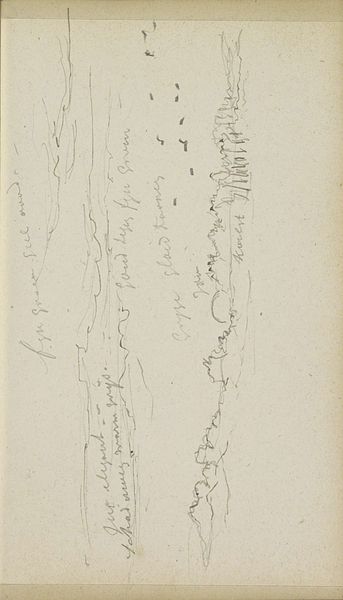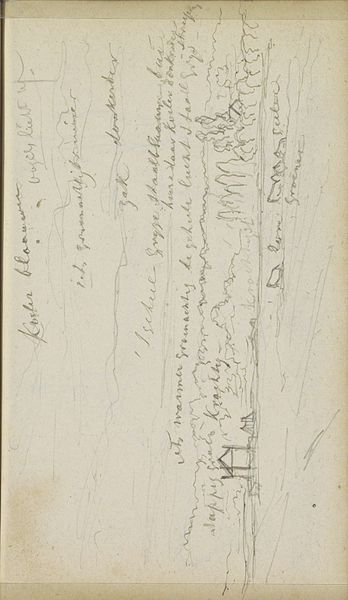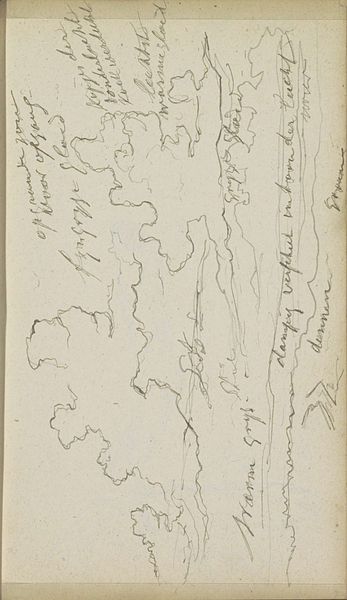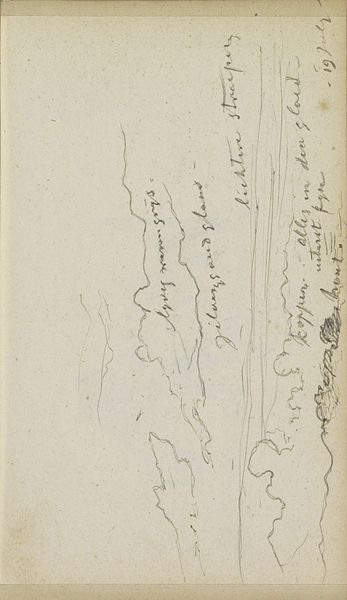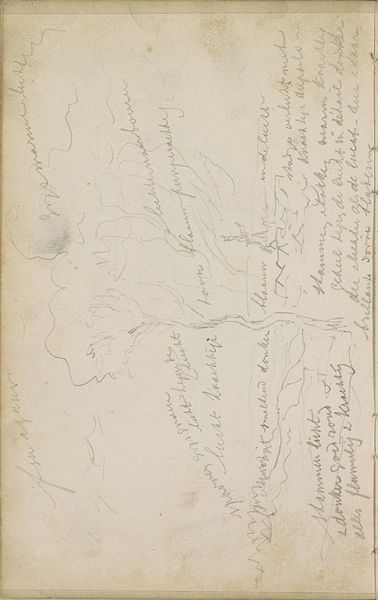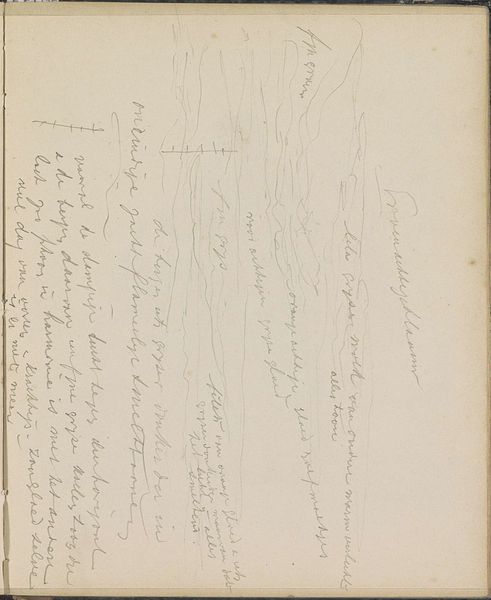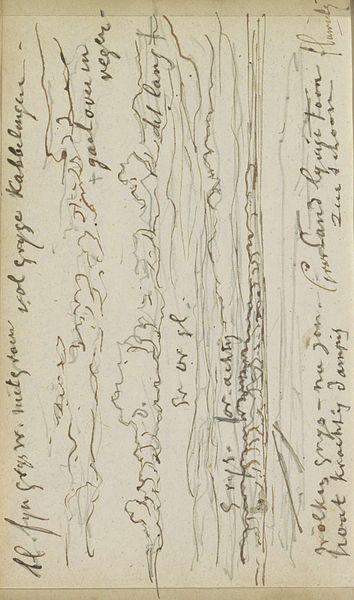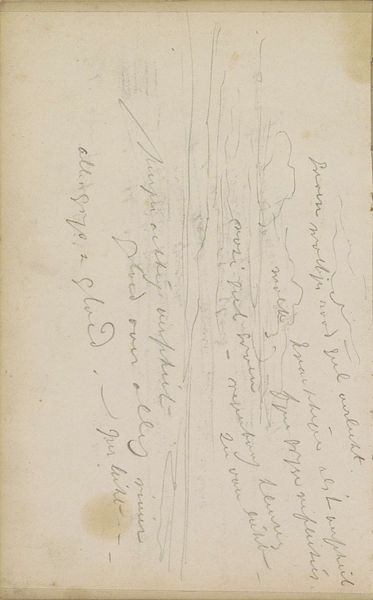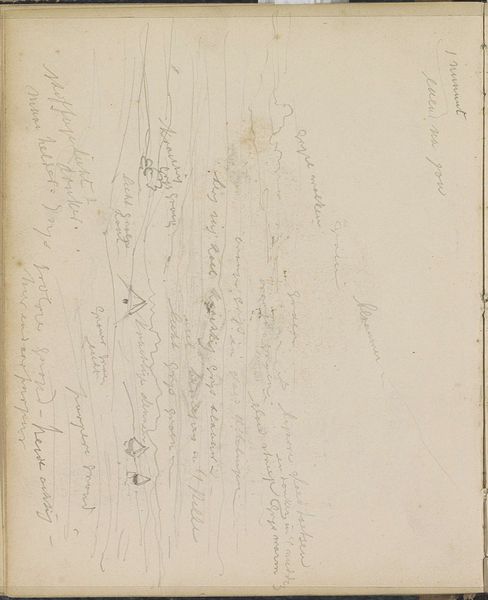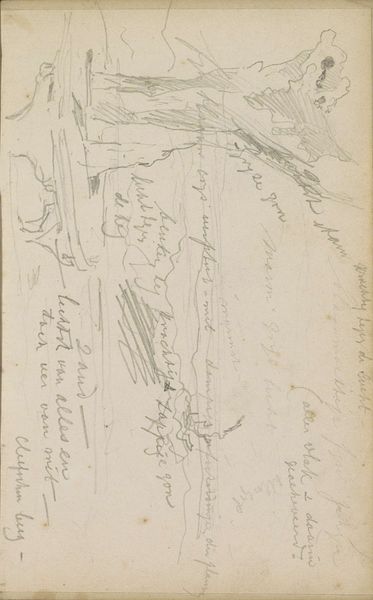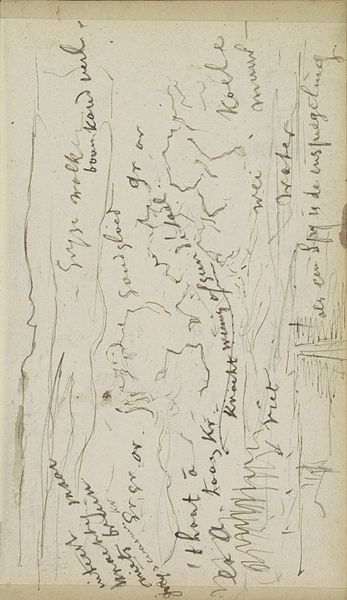
Copyright: Rijks Museum: Open Domain
Editor: This is "Wolkenlucht boven grasland," or "Cloudscape over grassland," a pencil and pen sketch by Johannes Tavenraat, created sometime between 1854 and 1868. It feels so fleeting and fragile, almost like a captured thought. What symbols or hidden meanings do you see within this wispy scene? Curator: The image, despite its sketch-like quality, calls forth something profound in its restraint. Think about the clouds. What did they signify during the Romantic period, when this was created? They weren't merely atmospheric phenomena; they symbolized the sublime, the power of nature, the fleeting nature of existence. Even the grassland suggests a grounded, earthly counterpoint to the ethereal heavens. Do you see how the artist uses line to distinguish these spaces? Editor: Yes, the difference in line weight is quite striking. The land is just a suggestion of a horizon, whereas the clouds almost seem to dance on the page, swirling and gathering. Curator: Exactly! And consider the medium: pencil and pen. These aren’t bold, permanent marks. They allow for nuance, for second thoughts, reflecting a sense of transience and immediacy. There’s a certain honesty, a vulnerability, that connects with a longing for something beyond the material world. It’s an appeal to the viewer's emotional landscape. What does the image stir in you personally? Editor: I think that it captures a quiet sense of wonder. It is as though Tavenraat stopped for just a moment, but was capable of creating something eternal. Curator: Precisely. And those personal responses contribute to the artwork’s continuous evolution of meaning through time, wouldn't you say?
Comments
No comments
Be the first to comment and join the conversation on the ultimate creative platform.
